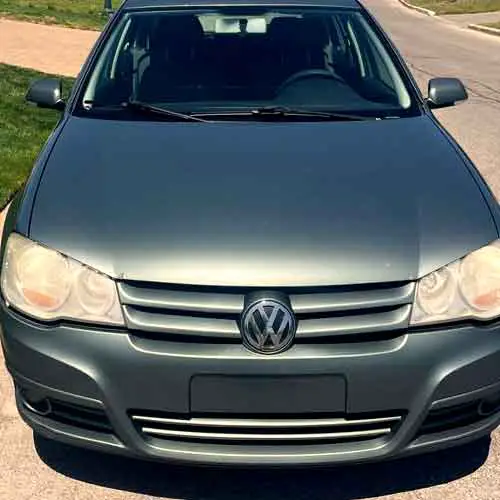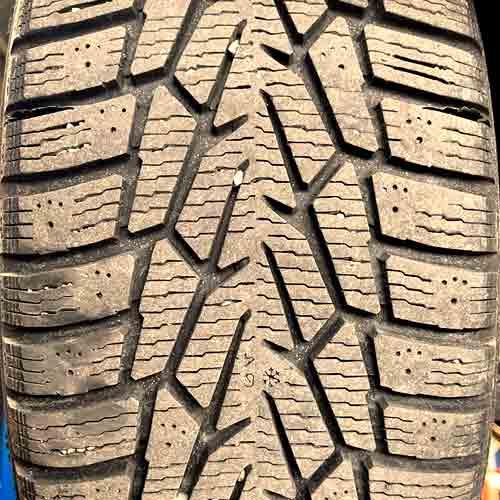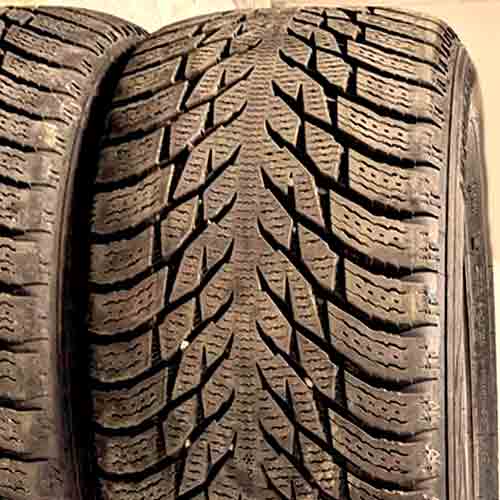In the winter tire world, Nokian Nordman 7, with its superb performance on snowy terrains, and Hakkapeliitta 10 R3, known for its excellent handling on icy roads, are both set to compete. So let’s find out which tire is a better fit for your needs!

Table of Contents
Wet Traction
Navigating wet surface requires more than just sipes. You also need a very complex make of tread rubber, along with well engineered grooves which account for hydroplaning.
Hydroplaning Resistance
Hydroplaning is a dangerous phenomenon, where tires act like unwilling hovercrafts, when water becomes an obstacle between the tread and the road surface.
So here it makes sense why the Nokian Nordman 7 (review) with wider grooves and more angled sweeping arms, gets to offer greater average float speeds on both straight and curved roads.
Float speeds is simply put, maximum speed a tire can reach over standing water, and the Hakkapeliitta 10 lacks in both by an average of 2 mph.

With closed up voids, this tire simply can’t evacuate water as abruptly as its counterpart.
Wet Grip
While hydroplaning has its role in overall wet gripping, sipes are still a major key players here. And that’s the reason why the Nordman 7, armed with more aggressive siping design gets to offer you with greater handling times and braking efficacy.
The tire basically offers an interlocking siping design, that goes all the way deep, down to the tread’s base, and this combined with its relatively softer compound, sipes act like thirsty sponges, drawing in water particles, allowing the tire biters to grasp the slightly dried surface firmly.
On the flip side, on the Hakkapeliitta 10 R3, these sipes aren’t that interlocking, and missing with full depth features. I mean don’t get me wrong, sipes do go all the way on its tread too, but it’s just not the same tread design you see at the end of the day, as the tire wears off, I mean.

Check out the tire’s image to see what I mean.
Dry Traction
Dry traction spins a two-part tale: one of directional grip, the other of handling. Let me talk about them both.
For directional grip, the limelight is on the central tread, meaning, its the tire’s main point of contact with the road.
And it’s especially true for winter tires, given their rounded contact patch and largely directional design.
But out of both tires here, the Hakkapeliitta 10 R3 still manages to come out better, showing up with 10 feet greater braking distance values.
Whereas on the other side, the Nokian Nordman 7, with its wider tread voids, is unable to match up, although its handling capabilities bring some redemption.
Handling is about maintaining traction during cornering, and largely hinges on shoulder lugs.
That’s why the Nordman 7 is also lacking here. Not only the tire features wider shoulder voids, but it’s blocks are also more prone to bending (as the tire turns, and weight focuses on those shoulders).
And consequently with this lug bending, the tire showcases lacking steering response.
Fuel Efficiency Assessment
Fuel efficiency and rolling resistance, in tires are both directly proportional to each other.
So looking at the factors affecting that resistance is the key, and those include tire’s tread design, weight, and the rubber composition, well, for the most part.
And considering all, it makes sense why the Nokian Hakkapeliitta 10 R3 sets a high bar in this department, owing to a combination of features designed to reduce energy loss and improve fuel economy.
First, its reduced weight compared to Nordman 7 plays a significant role. Lighter tires have less inertia and require less energy to rotate, which means the vehicle’s engine doesn’t need to work as hard, resulting in less fuel consumption.
Secondly, the tread design of the Hakkapeliitta 10 R3, with its longitudinally aligned tread ribs, provides a more streamlined path of travel. This reduces air resistance and further contributes to lower energy consumption.
And yes, lastly, the tire also features a more innovative silica-based compound that reduces friction between the tire and the road, resulting in a smoother ride and less wasted energy.
The Nokian Nordman 7 basically lack a little bit to its counterpart in all these sub-departments. This tire, features a softer tread compound (for the sake of simplifying things), which basically is more susceptible to lug bending, so extra energy is required in the rolling of the tire.
Ice Traction
Mastering icy conditions is arguably one of the most difficult feats for any tire, and its the most important reason why winter tires exist.
But what’s the main attribute of any winter tire? Well, having a lot of biters, on the tread.
So it makes sense why out of both Nokian boys here, the Nordman 7 still takes the lead by showcasing faster handling times, steering response values, and directional grip.
Thanks to the it’s innovative, and aggressive siping, and in-groove notches, the tire offers a more confident drive on this packed up snowy terrain.
The Hakapeliitta 10 on the other side, lacks the necessary tread design features such as aggressive siping, and snow vices. And yes, you also don’t have the option here to add studs, which further improves things up on Nordman 7.
Tread Longevity Evaluation
Tread longevity is an unsung hero when it comes to evaluating a tire’s worth, as it directly adds to the overall tire’s value.
And in this respect, the Hakkapeliitta 10 R3 proves its mettle.
Its relatively durable rubber, which is also infused with a greater composition of silica, leads to a reduced friction with the road, resulting in slower wear of the rubber.
This attention to detail ensures the tire’s longevity, promising reliability and consistent performance over time.
On the flip side, the Nordman 7, burdened by its extra weight and larger tread voids, so it generates a faster burning rate in comparison.
Snow Traction Analysis
The Nokian Nordman 7 is also a better tire when it comes to soft snowy terrains, as the tire features a design which allows for superior snow to snow contact abilities.
This type of contact is what you want exactly, because of simple fact that snowflakes like to stick on to each other more, instead of rubber.
The multiple tread voids on the tire amply trap in snow particles better and offer greater frictional values compared to Hakkapeliitta 10 R3.
Comfort Level Assessment
The level of comfort offered by a tire is although also dependent on its steering feedback capabilities, its mostly relied on the tire’s ability to soak up the imperfections of the road, if you will.
And here, the Hakkapeliitta 10 R3 is taking the lead, with its relatively spongier inner construction and tread rubber on top.
These allow for better dampening of the road vibrations compared to less absorbent tread rubber on Nordman 7.
Tread Noise
Tread noise is another area, which enhances the overall ride comfort by a lot, and here, again the Hakkapeliitta 10 R3 is taking the lead.
This is because this tire features intricately designed and densely arranged lugs that don’t allow a lot of air particle collisions in the first place. That’s what tread noise is by the way, its simply because of air, and with less bald design, the Nokian 10 R3 gets to be quieter.
Furthermore, the tire’s advanced pitch sequencing technology dampens any residual noise, resulting in a peaceful driving environment, relatively.
In comparison, the Nordman 7 isn’t able to provide the same experience here, as the tire’s tread produces greater in-groove resonance.
So what’s the verdict?
Well, it all comes down to this.
In the realm of wet traction, the Nokian Nordman 7 trumps with superior grip and resistance to hydroplaning, thanks to the tire’s well engineered biters.
These biters are also allowing this tire to be better when it comes to snowy and icy terrains.
Though things are a little different on dry roads, where the Hakkapeliitta 10 R3.
Moreover, the tire also takes the lead, when it comes to overall comfort and tread life, but lacks to its counterpart in case of fuel economy.
In the end, just leave with this, while each tire has its strengths, your ultimate choice depends on your specific needs and driving conditions.